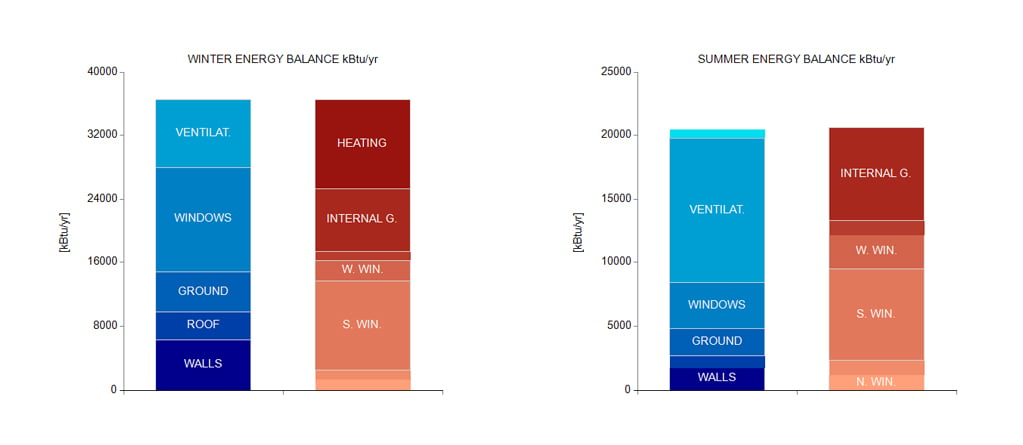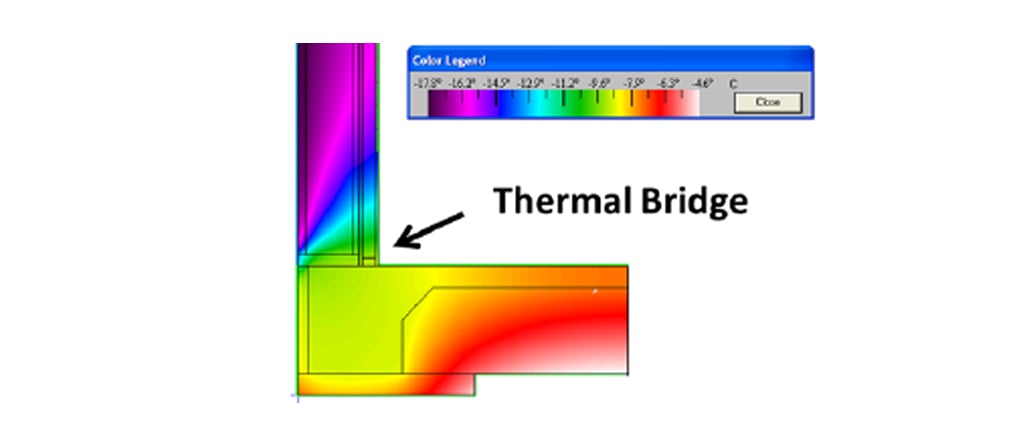It can be difficult to keep up with the technical jargon used to discuss energy efficiency. We have defined many of the industry standards and design features as they relate to the work that we do.
Building Efficiency Standards
Net Zero. A building that generates as much energy on-site as it uses. Photo Voltaic (PV) solar panel systems tend to be the most cost-effective technology to achieve Net Zero. The Passive House approach makes Net Zero easy to achieve. Most conventionally- built homes typically don't have enough roof area for the large number of solar panels needed to meet the energy demand.
Passive House/Passivhaus. Passive House is the world’s leading high-efficiency building standard. It integrates energy modelling software into the design process to optimize the energy performance of the house. This drastically reduces the energy required to heat and cool the home. The result is comfortable living with a steady indoor temperature and humidity. This is acheived at a fraction of the cost of conventionally-built homes.
![PH_Principles_DIAGRAM_1_1024x1024[1]](https://blog.passivedesign.ca/hs-fs/hubfs/PH_Principles_DIAGRAM_1_1024x1024%5B1%5D.jpg?width=1023&name=PH_Principles_DIAGRAM_1_1024x1024%5B1%5D.jpg)
R-2000. A Canadian voluntary building efficiency program supported by the Canadian Home Builders Association. It encourages builders to exceed the National Building Code requirements to reduce energy use. Most provinces have now adopted this level of performance as part of the building code. The Net-Zero Ready Program has replaced R-2000. Net Zero reduces energy by 35% over code-built homes.
LEED for Homes – Leadership in Energy and Environmental Design. LEED is a point-based certification system that measures how well a home performs as a green home. This point system determines the enviromental merits of the building. Energy Efficiency is one component of the LEED program. Local and recycled materials, water efficiency, and non-toxic materials are other components. A Passive House will maximize the energy points in LEED, making it easy to achieve Platinum LEED for Homes.
Passive Solar. A house positioned towards the sun to take advantage of its free heating in cold climates. Passive Solar is often confused with Passive House. Passive Solar is a building approach from the 1970s. These buildings capture large amounts heat from the sun and store it in a large thermal mass in the home. Like a hot stone, this thermal mass radiates heat back into the space. Passive Houses in Canada are passive solar where the site allows for it, but can be designed without it. Passive House principles reduce energy use, making it less dependent on passive solar.
Design Features
Solar Orientation. The solar orientation of a lot or piece of land is determined by two factors: the location of the road and direction of south (in Northern hemisphere). We group our projects into three main categories: south front yard, where the front door faces south; south side yard, where the one of the two side yards face south; and south back yard, where south is the backyard and the front door is on the opposite face.

Building Envelope. This is the part of the building that separates the indoors from the outdoors. This includes the walls, windows, roof, foundation, and joints between these elements. The building envelope must control the flow of heat, air, moisture, solar radiation, insects, and noise.
R-value/U-value. While related, R and U values are different ways of measuring the heat loss of a building or material. In North America, materials are listed with R value. In European markets, U values are more common. R values in Passive House are 2 to 3 times the level required in the National Building Code.
Super-insulating. Thick layers of insulation to the level where it becomes more cost effective to add solar panels. This must be determined using an energy model for each project based on orientation, building shape, and local climate.
Air tightness. Air tightness is the measure of how much air leaks through the building envelope. In a typical home, air leakage accounts for 50% of heat losses. Air leakage brings moisture into the building materials and can cause mold and rot in your home. We don’t breath through our skin, we use our lungs. We want our buildings to do the same using a balanced mechanical ventilation system. The ventilation system provides continuous fresh air into the building. Not only is this more energy efficient, but it results in better air quality and more comfort.
Heat Recovery Ventilator (HRV/ERV). HRVs and ERVs are mechanical ventilation systems. These systems provide fresh air to living spaces and exhaust stale air from kitchens, bathrooms and laundry rooms in the home. The outgoing exhaust air provides heat exchange into the incoming suppy air. With an ERV, the moisture is also exchanged into the supply air. The result is warm, filtered fresh air supplied throughout the home, providing high interior air quality.
Ductless Mini-Split (DMS). A DMS is a type of heating system based on heat pump technology. In a high-performance home, a single ductless mini-split is often sufficient for all heating and cooling needs. This allows for the elimination of a costly centralized heating system. A small outdoor compressor pairs with an interior unit to heat, cool, and dehumidify the home. This system uses a fraction of the energy of larger traditional heating systems.
HPHW heater. This type of hot water heater combines a heat pump compressor with conventional electric heating rods in an insulated tank. The heat pump takes heat from the air inside the home and delivers it to the water inside the tank. This reduces the electrical demand to deliver hot water. In a Passive House, the heat pump helps to cool the home and can be switched to electric mode during the winter.
Condensing or heat pump dryer. A type of dryer that requires no external venting. With an airtight home, direct vent appliances will depressurize the home. The direct vent appliances pull cold air through the building envelope to make up for the vented air. This can also pull radon gas into your home. We avoid this in a Passive House by using a condensing or heat pump dryer that does not need direct venting.
Energy model. A computer software model that calculates the energy use of your home. It is specific to your project and includes shape, orientation, insulation levels and the local climate. This tool is used to optimize the building performance.

Energy efficiency. Energy efficiency means you are using less energy to do the usual functions in your home. Incorporating energy efficiency in the initial planning is the best way to ensure your home is as efficient as possible. With steady increases in energy costs, energy efficiency is the “cheapest fuel.”
Grid-tied. A building that generates its own power via solar or wind, but does not store it on-site in batteries. Energy is sold into the power grid as it is produced and bought back from the grid as it is consumed. It is important to note that if you have a grid-tied solar system, you lose your electricity during a power outage. Batteries and generators can be used in the design to provide power during storms.
Off-grid. A building that is not connected to the public utility and operates completely on the energy produced and stored on-site. A large number of batteries store the electricity within the building.
Solar PV/Solar thermal. Solar thermal panels heat water directly from the sun without converting it to electricity. Photovoltaics (PV) generate electrical current from sunlight which is fed into the grid or stored in batteries for use in the home. Solar thermal systems are more complicated but can be practical in certain high heat demand circumstances. For most homeowners, the cost of PV outcompetes other forms of renewable energy technology.
Triple-pane/glazed (windows). Window units that include 3 panes of glass with gas-filled cavities between the panes. They also have two energy coatings that can be specified to optimize the energy performance of your home. In a Passive House in cold climates, triple pane windows are critical. We must have these windows to make a high-performance home.
Thermal bridge. Heat leakage uninterrupted from the interior to the exterior of the building envelope. A thermal bridge typically occurs where two building materials of different R-values meet. An example is where the stud wall meets the top of a foundation wall. These bridges both leak heat from the building and pose condensation risks leading to mold and rot in the building materials.

Embodied Energy. The total energy bound in a material. This includes the manufacturing, processing, transport, installation of a material, assembly or structure. Materials such as steel and concrete have very high embodied energy where cellulose is very low. Although not required for the Passive House standard, we keep an eye on this during design to help do our part in the fight against climate change.
Building Science. Research and engineering that analyses building assemblies for thermal and moisture performance. Good building science is imperative in Passive House projects. Without good building science, the elements of the building envelope are susceptible to mold, rot, and building failure.



